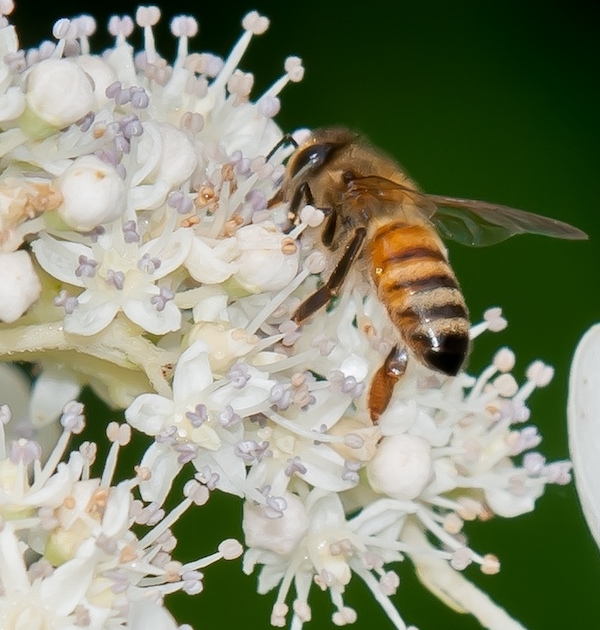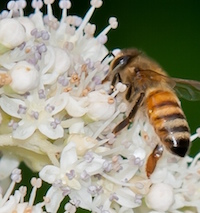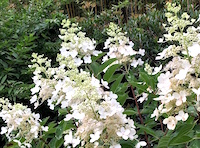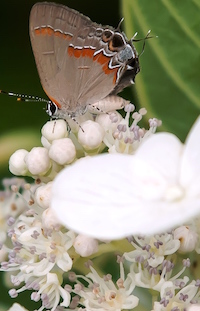Hydrangea paniculatas must be the showiest plant in the summer garden, and I have affection for all of them. ‘Chantilly Lace’ and ‘Pinky Winky,’ however, have captured my heart, not only in terms of their beauty, but also because of their proclivity to attract pollinators.
Here at the Coastal Georgia Botanical Garden at the Historic Bamboo Farm in Savannah, we have several of the leading varieties of what we call the “panicled hydrangeas.” With 51 acres and the hydrangeas spread out, I have not paid that that much attention to any visiting pollinators.
Everyone loves them against a backdrop of deep green garden foliage or combined with cottage garden plants like rudbeckias. Bees, butterflies, wasps and giant flies, however, will make you consider adding a little dazzle from ‘Chantilly Lace’ or ‘Pinky Winky’ to the backyard wildlife habitat.
If you are not using the panicle hydrangea, why not? They are cold-hardy and recommended from zones 3 through 8 (9). In Savannah, where we push zone 9, they do superbly. This means just about the whole country can grow them.
The Hydrangea paniculata, or panicle varieties, are different than the mophead, or French, hydrangea. The leaves are smaller and the quantity of flowers is incredible. The flowers may be 6 to 15 inches long and most are held upright on the plant. You now have a staggering list of choices as far as the size, from those that are diminutive or dwarf to those reaching 10 feet.
It seems not one nursery or catalog description mentions pollinators in association with the Hydrangea paniculata. Perhaps this is because most have sterile flowers. If you look at internet images, you will see that there are selections that do seem to attract pollinators.
This is an important criterion with many gardeners. These selections, like ‘Chantilly Lace’ or ‘Pinky Winky,’ seem to have an ample quantity of both sterile and fertile blossoms. Though the fertile blossoms are not near as showy, they make up for it in honeybees and other pollinators.
Ideal growing conditions include fertile, well-drained soil with morning sun and afternoon shade. In the landscape, plant the hydrangea among other shrubs 72 to 80 inches apart in odd-numbered clusters for a terrific, eye-catching display.
To plant your hydrangea, dig the hole two to three times as wide as the rootball, but no deeper, so you can plant it at the same depth it is growing in the container. Apply a good layer of mulch to conserve moisture. Once established, you’ll find your panicle selection is less dependent on water than its big-leafed cousins.
Soil pH does not affect the color of the flowers like it does with the blue or pink big-leafed hydrangeas. Any flowers left on the plant do provide winter texture and interest. ‘Chantilly Lace,’ ‘Pinky Winky’ and the other panicle varieties bloom on new wood, so prune in late fall or early spring. A medium pruning that removes one-third to half of the plant size gives a better structure for large blossoms and the new season ahead. Feed your hydrangea in early spring as new growth resumes.
Everyone loves hydrangeas, bees and butterflies. Now, with varieties of Hydrangea paniculatas like ‘Chantilly Lace’ and ‘Pinky Winky,’ you can have them all.
Follow me on Twitter @CGBGgardenguru. Learn more about the CGBG at www.coastalGeorgiabg.org.










